DynoChem 是Scale-Up Systems公司開發,世界領先的醫藥、化工領域工藝開發和放大計算軟體。DynoChem使用Excel作為數據錄入界面,用戶可輕鬆操作的同時調用系統強大的計算擬合功能完成放大工藝設計。這款軟體貫徹質量源於設計(Quality by Design)的先進理念,促進了過程開發中不同部門之間的合作,提高了科學家和工程師的研發和生產效率。目前,DynoChem已經在全球多家領先的製藥公司、農業化學品公司和CRO公司中使用,並成功在數百種API反應、後處理和分離純化中進行了實際應用。
應用領域
- 實驗室級別反應放大優化
- 新API反應步驟在多用途反應容器中的一次成功放大
- 流動化學方案
- 後處理和分離步驟的放大預測
- 結晶過程中溶劑和反溶劑的選擇
- 混合和傳熱計算
- 汽-液平衡和汽-液-液平衡計算
- 成熟工藝的持續改進
Subject Matter Experts use Dynochem to:
- Optimize mixing
- Minimize impurities
- Design for flow
- Telescope steps
- Design solvent swap operations
- Optimize crystal growth
- Reduce centrifugation, filtration and drying cycle times
- Predict product stability
Each User has Access to:
- Extensive physical property data and calculation tools
- Mixing and heat transfer assessment and characterization tools
- Ready-to-edit dynamic models developed for easy use with commonly available experimental data
- Expert project support from experienced PhD chemists and chemical engineers
- Regular FREE online training sessions
Industry Challenges and Opportunities
- Developing a manufacturing process in compressed timelines is extremely challenging
- Industry practitioners need problem-solving tools that work better than trial and error experimentation, which carries a significant risk of failure
- Predictive process models can provide a solution if they can be built quickly and allow users to remain focused on the process goal
- Industry 4.0, Digitalization and Digital Twins create a greater need for process models
Dynochem: Modeling that's Fit for Purpose
- Dynochem is the industry leader because our software lets you 'jump right in', creating powerful models without needing to write programs or complex equations
- The same Dynochem skills can be applied equally to any unit operation
- Models can be shared easily so that users and partners build on existing knowledge and avoid diluted effort
- Our authoring tools are the easiest way to create the models needed to deploy Digital Twins
Mixing and Heat Transfer
- Ensure adequate mixing and heat transfer on scale-up
- Using your own vessel database, accurate mixing assessments can be made in minutes
- Avoid issues during scale-up, e.g. extended reaction time, increased impurity levels and safety concerns
What Customers say:
- “The value of reviewing two reactors side-by side is enormous”
- “Easy to do a reactor-reactor process transfer”
- “It means a big help for our pilot engineers to prepare for any scale-up project!”
- “It brings a very fast way to compare lab-scale, pilot-scale and production-scale reactors and choose the appropriate mixing parameters for the scale-up!”
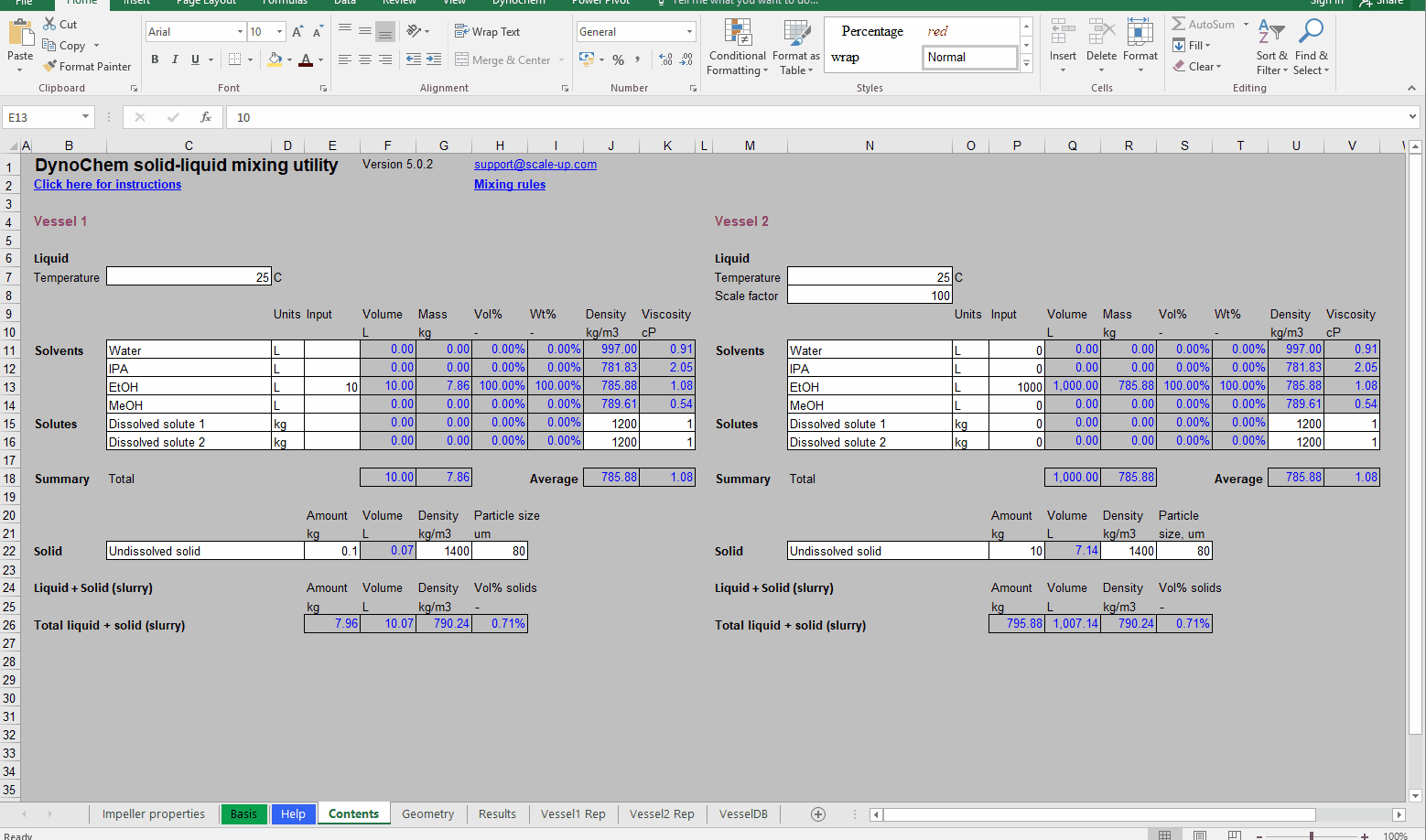
Solvent Switch
- One of the most common batch operations: estimate fresh solvent requirements on scale-up
- Example of dynamic model
- Easy-to-use interface
- Simulations run in seconds
- Optimize scale-up, e.g. prevent material crashing out, minimize solvent usage
What Customers say:
- “All distillations conducted in our Pilot plants undergo simulation prior to first batch execution. 2 to 3 unique applications per week”
- “Project start to finish time is < 10 minutes”
- “The final composition profile predicted by the tool is consistently very accurate”
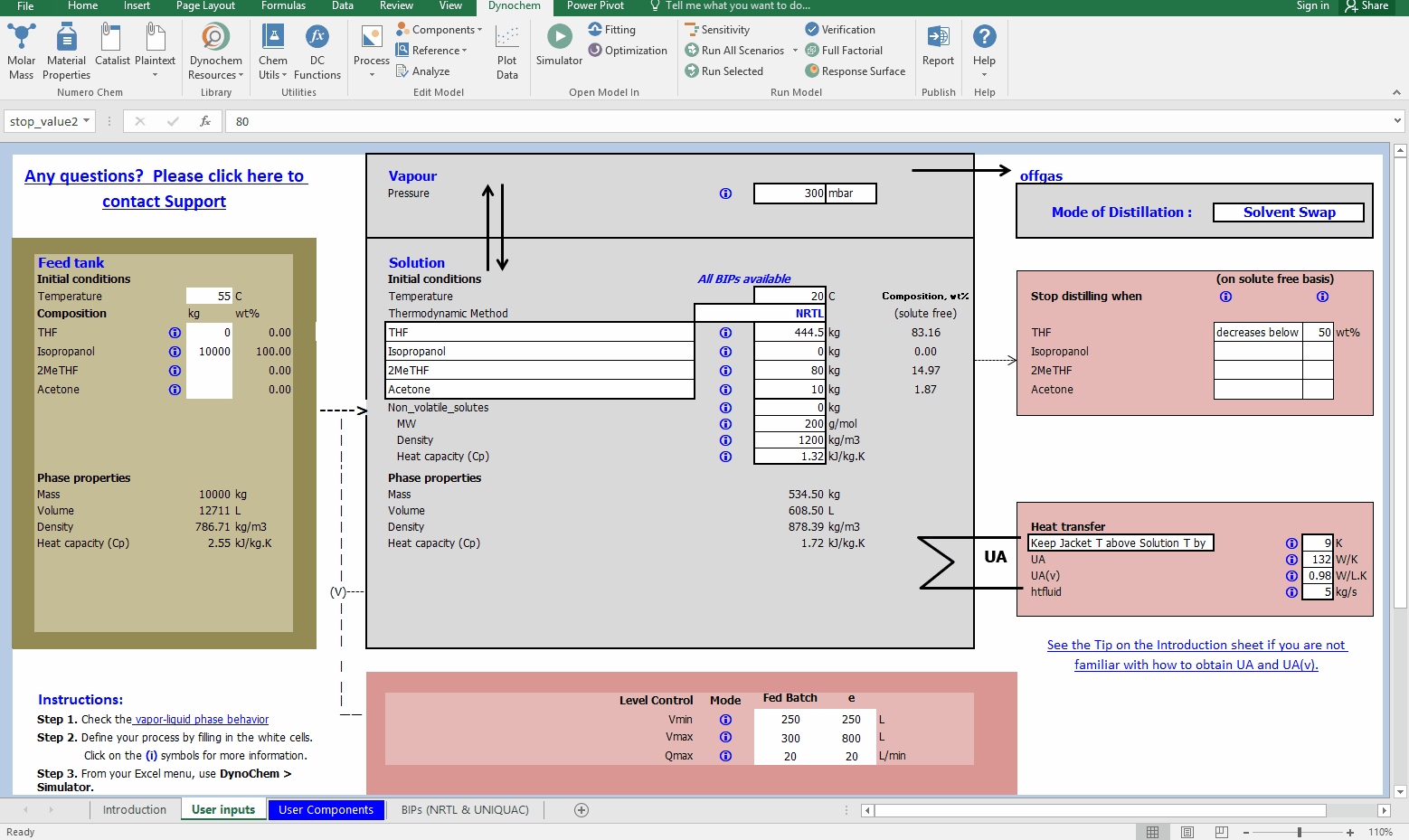
Reactor Modeling and Scale-up
- A powerful tool for optimization and scale-up in batch, and a “life-saver” for continuous manufacture
- No need to write complex equations or program code
- Run an in-silico Design Space in minutes
- Real process understanding
What Customers say:
- “The interaction between experimental time course analysis and modelling leads to huge gains in process understanding”
- “Models can vary from the simple to very complex, but they all offer the ability of transferring process understanding”
- “It would be difficult to summarise all our experimental data in anything as succinctly as a model for 10 years down the line when people are running this step in a manufacturing environment”
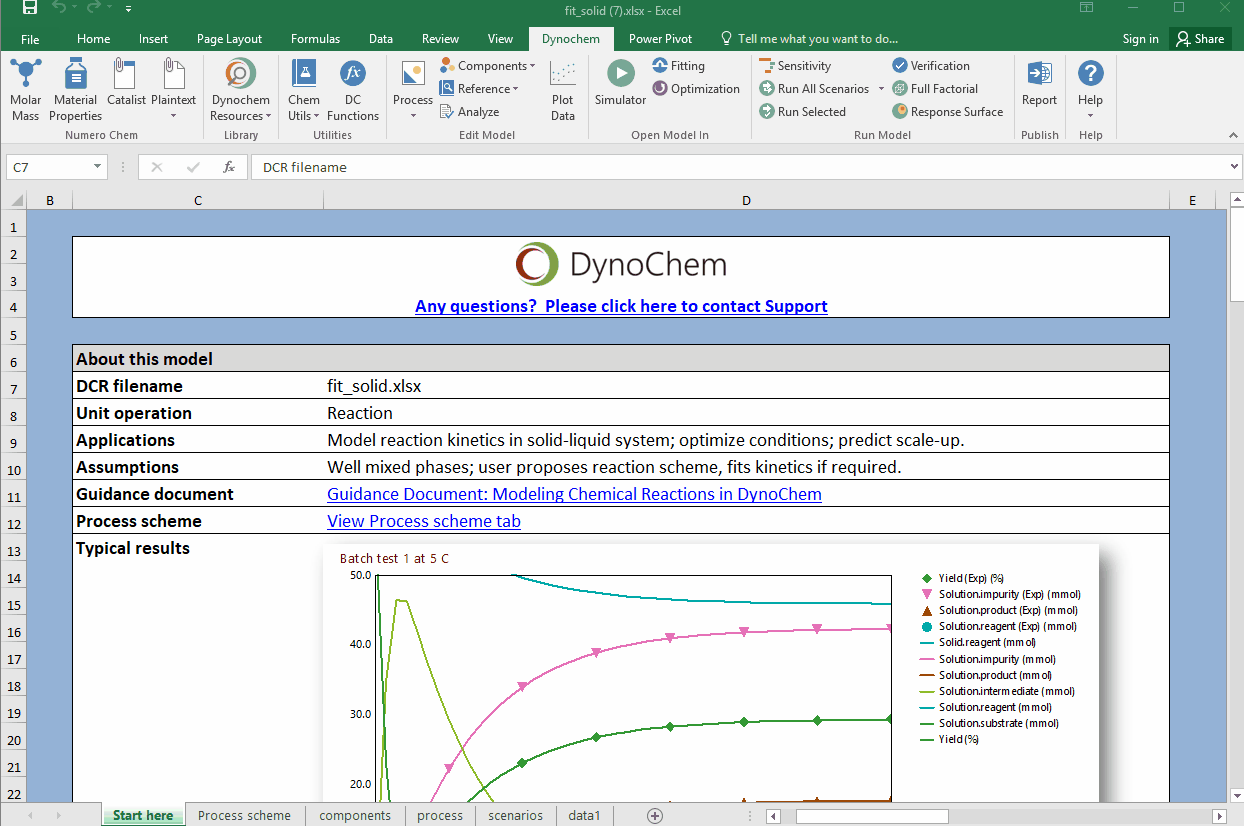
How to use Dynochem functions to retrieve physical property data in Excel
The functions are available in all Excel workbooks and provide access to a rich set of properties for solvents and other materials.
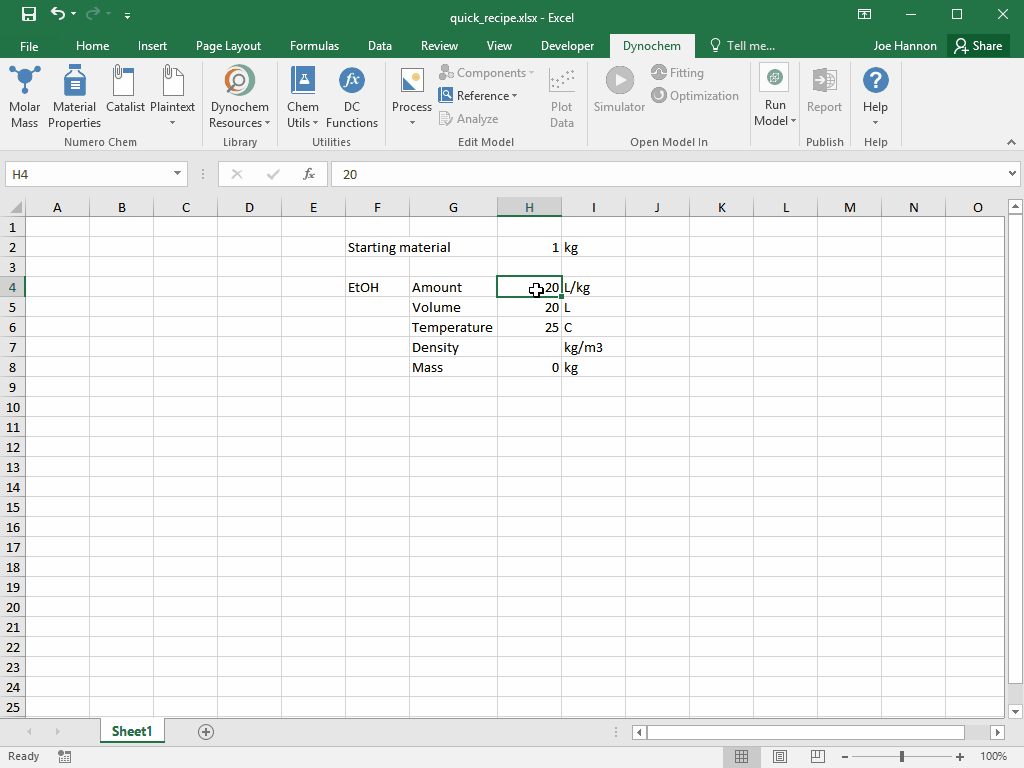
How to run a kinetic model in Dynochem Simulator
You can use Simulator to run dynamic models of all types of unit operation and other time-dependent processes. You can also start Simulator from inside a Dynochem model in Excel.
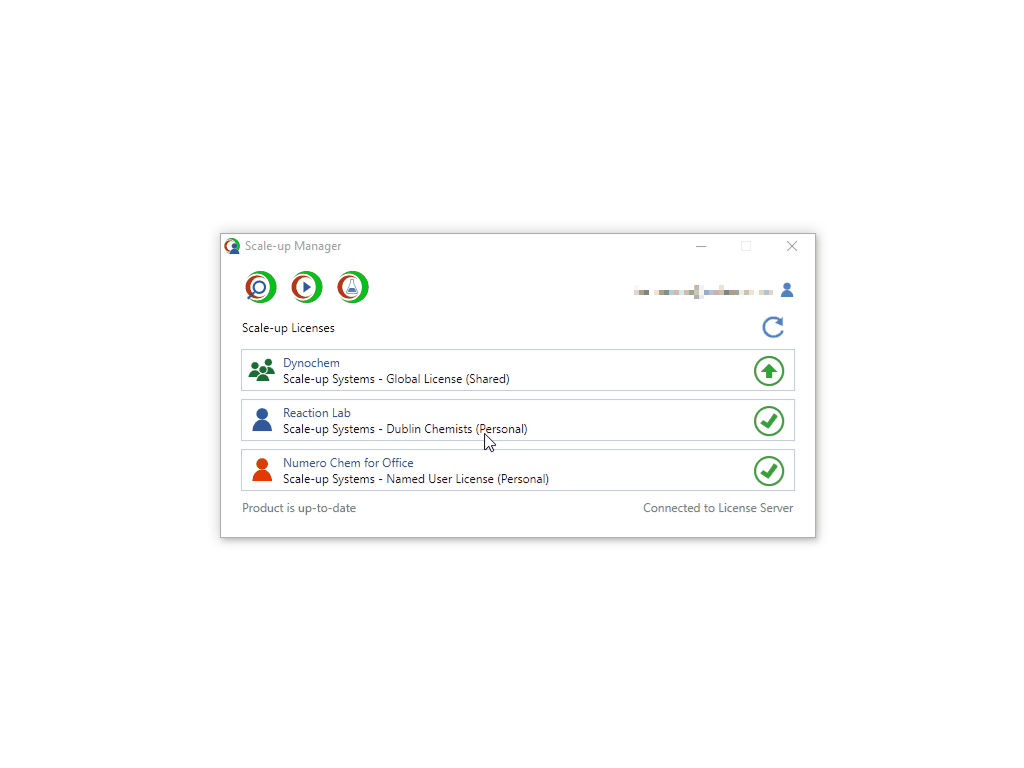
How to use a model to find optimum conditions for a chemical reaction
You can use the Optimization window to find the best combination of multiple factors to achieve your project goals.
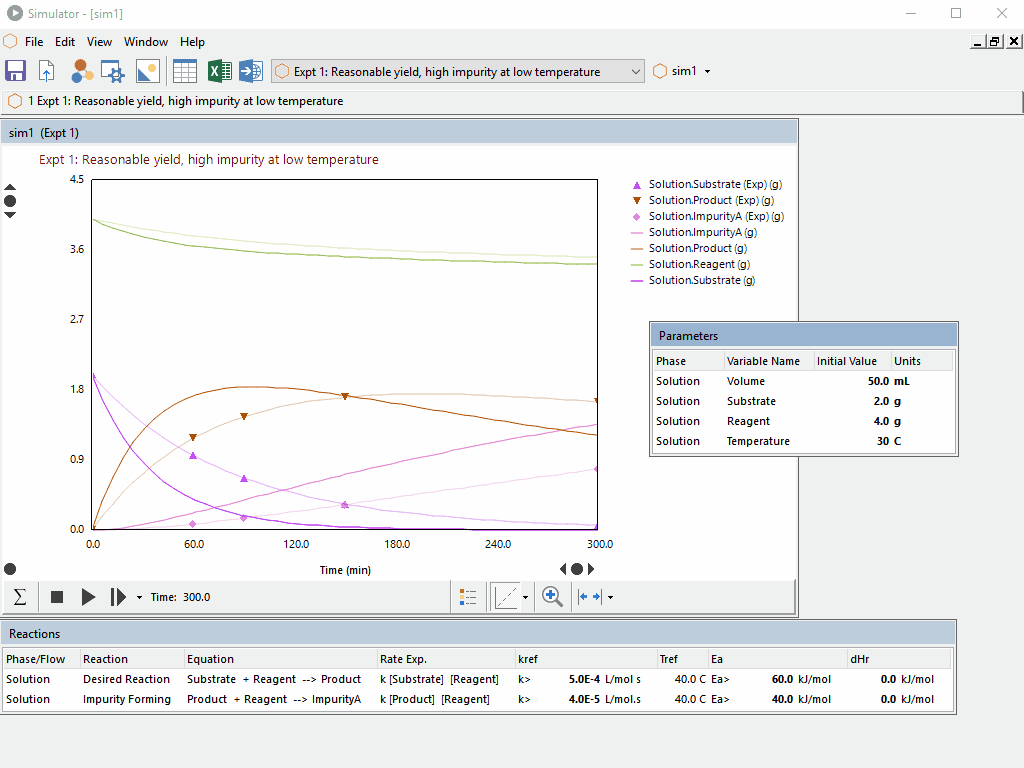
Reaction Lab
Kinetics Meets ELN
Reaction Lab is a new product from Scale-up Systems that enables chemists to quickly develop kinetic models from lab data and use the models to accelerate project timelines.
Numero Chem
Office Just Got Smarter
Designed for chemical industry professionals, this new add-in brings calculations and chemistry to Word, PowerPoint and Outlook.
Keep your train of thought going and improve productivity when writing technical reports, emails and presentations.

